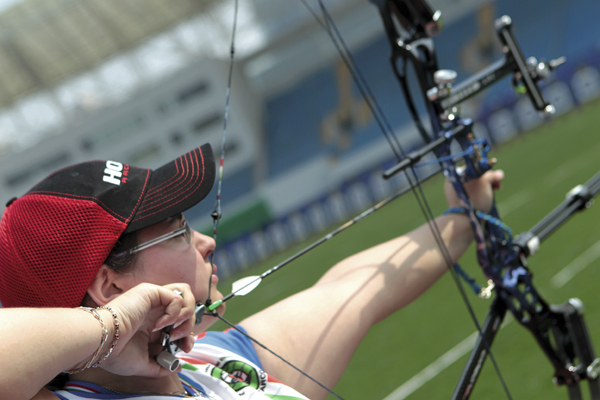Q: I have been scoring quite well in compound competition, but I’m still shooting a number of weak and wayward shots. What could be the reason for that?
A: Weak shots, which often feel tentative at full draw, and which often break early, or simply won’t break at all, all stem from a power differential between the front half and the back half of the shot process. By this I mean that at full draw, there has to be an aggressive set against the wall, and the archer must be proactive in expansion. If your hold against the wall is not definite and you tend to be a waiter, hoping somehow the shot will go off, then the result will always be a weak shot.
You need equilibrium between the hold out front and the hold at anchor. This was one of the problems I first encountered in my switch from recurve to compound. I had the misguided idea that if I was at all aggressive at anchor then that would hamper my aim. So with a fairly light trigger, and a deliberately “gentle” anchor, I wrongly believed I would aim steadier. Now while there would seem to be some logic in this approach, it is, in fact, totally flawed. Creating a solid balance of power both at the bow hand hold, and at anchor, by pulling solidly into the wall, by employing decent trigger tension, and by activating positive expansion, is how the weak shot syndrome is overcome. You need to be very sure you can place your thumb on the post without the shot firing, at the same time having definite engagement with the wall, and from this setup not only does it take minimum pull, or scapula motion, to cause the shot to break, but it does in fact enhance the stability of your aim.
Roy Rose


